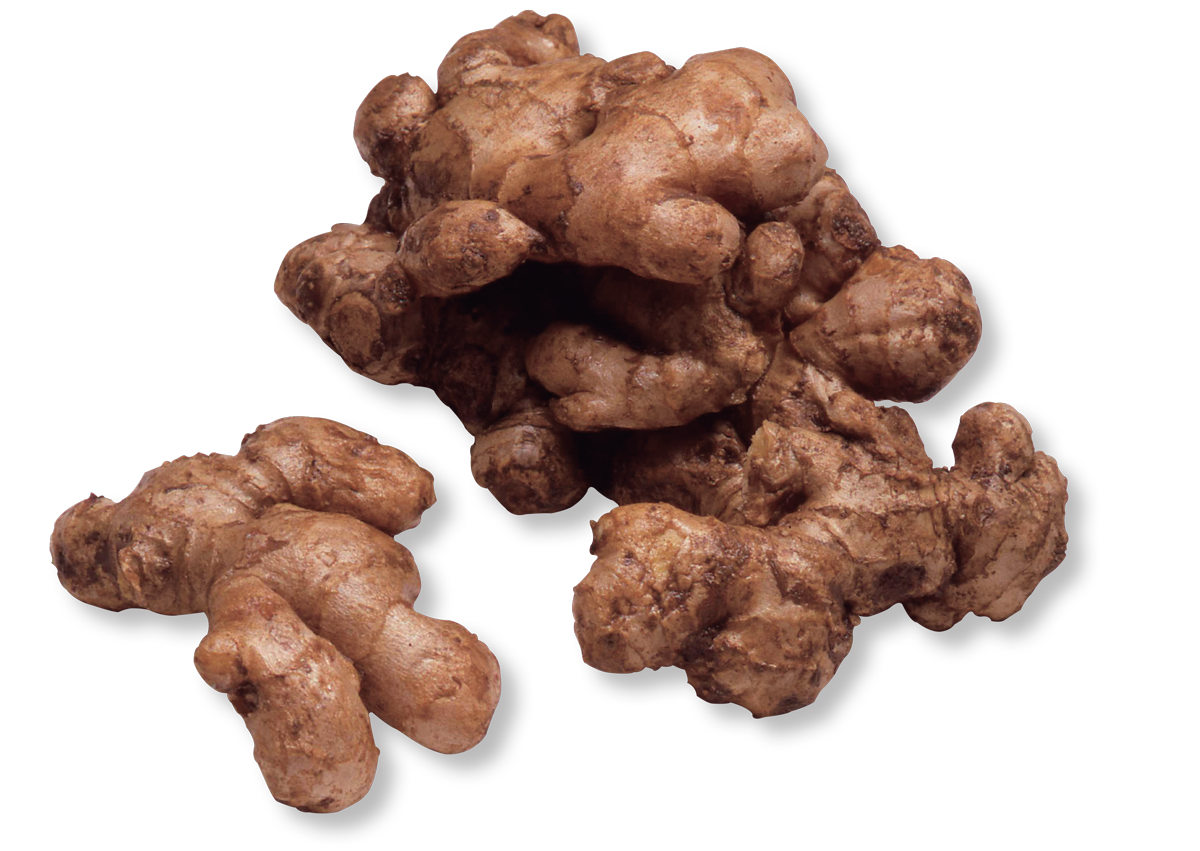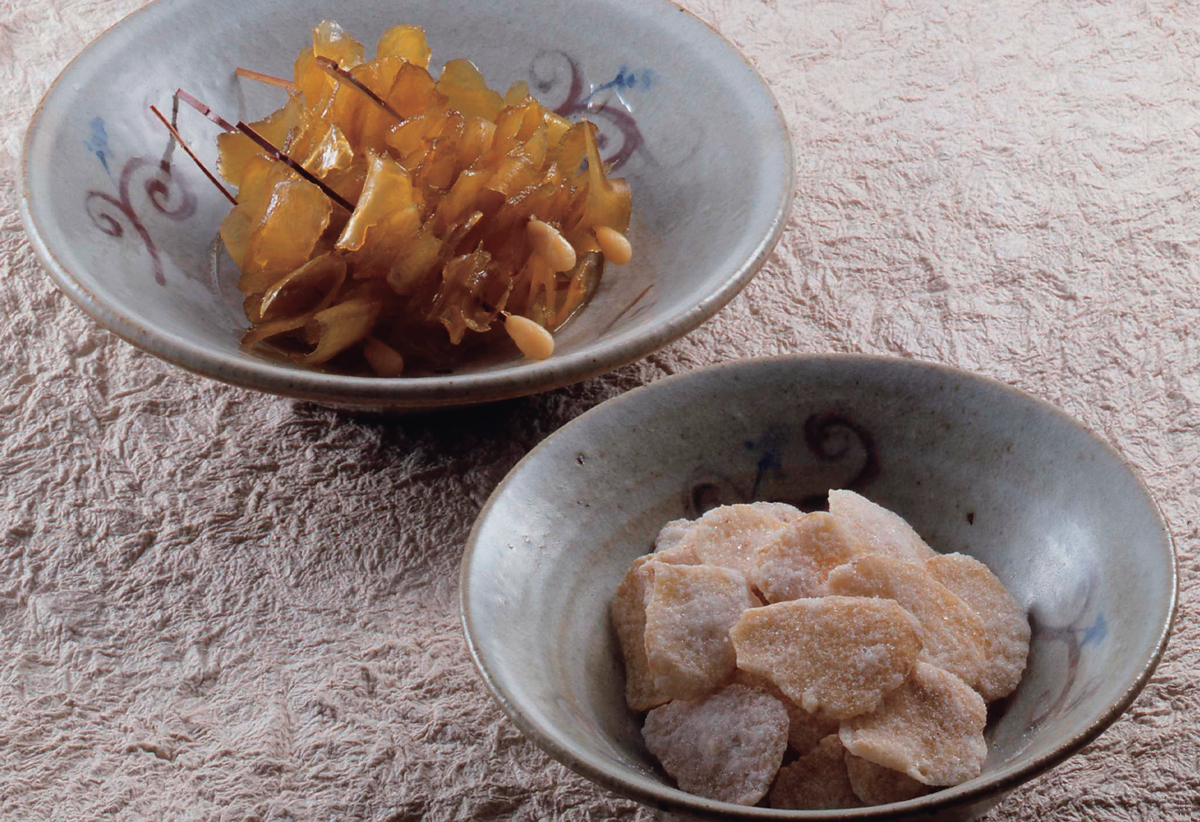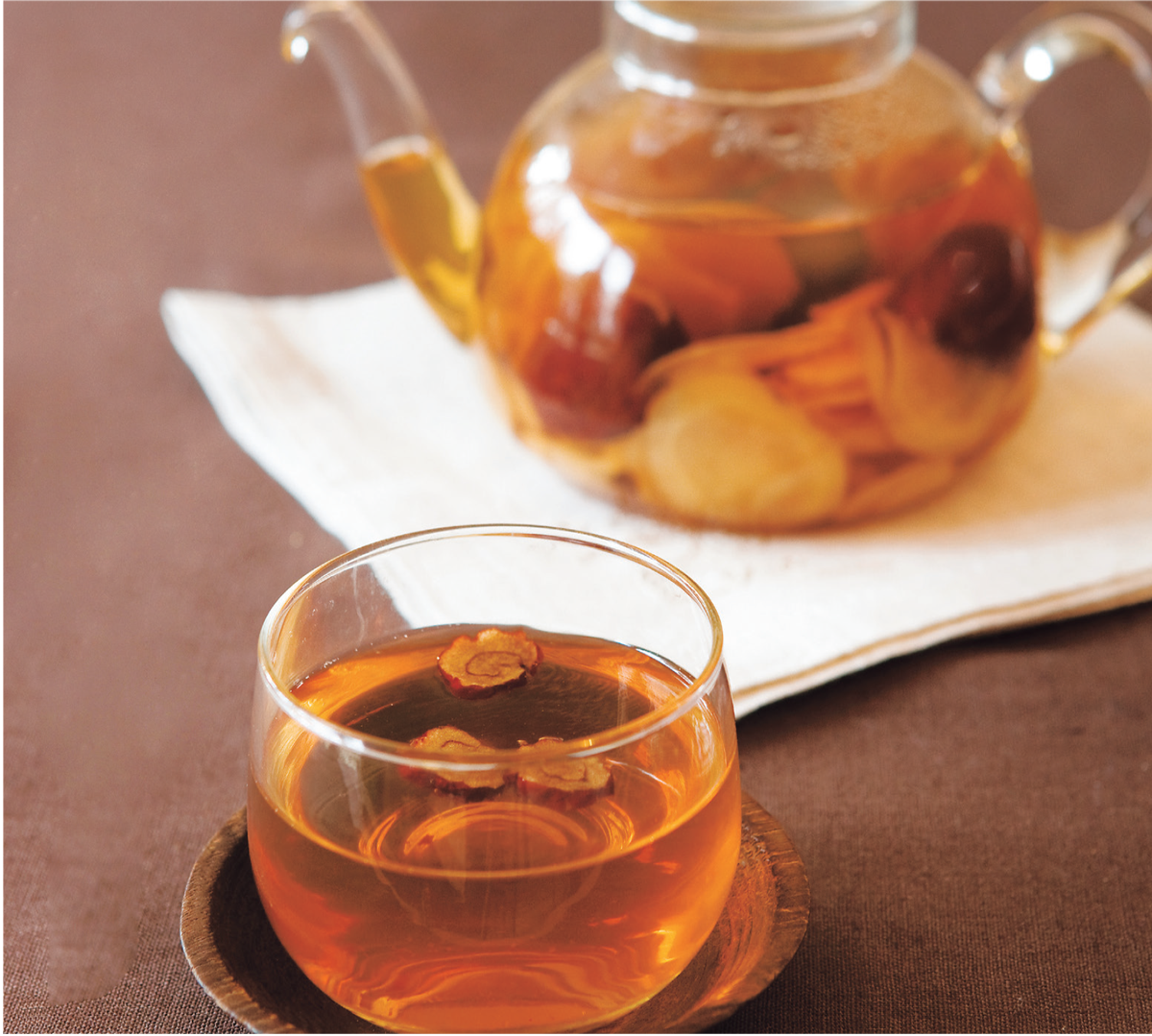Ginger is not only frequently used in Korean foods such as kimchi but is also enjoyed in snacks and tea for its health benefits. In Europe, ginger was once a very expensive spice and hence was mainly used to show off rather than for actual flavoring.

Ginger, a precious spice for the Europeans during the Middle Ages, had been widely used in Korea as medicine a long time before it was used in food.
Much like couture, food ingredients, too, go in and out of fashion. The ancient Roman cookbook “Apicius: De Re Coquinaria” (On the Subject of Cooking), compiled between the first and fourth century A.D., is regarded as the first cookbook of the West. Most of the recipes presented in the book include spices imported from India and the Far East. Pepper appears particularly often, being included in 80 percent of the recipes. However, in the Middle Ages, the popularity of pepper waned and ginger took its place.
During the Middle Ages, ginger was an important ingredient that lent authority to the dinner tables of French nobility. In the first French cookbook, “Le Viandier de Taillevent” (The Viandier of Taillevent), published in the 14th century, ginger took first place in the list of spices, while the chef and gastronome Chiquart Amizco, who wrote down various recipes collected from around Europe in the 15th century, also mentioned ginger as the first spice necessary for the preparation of a royal banquet.
Rare and Precious Spice
Some claim that the popularity of ginger in Europe in the past can be attributed to its ability to cover the bad taste of salt-preserved meat and corrupt food ingredients or to keep meat fresh. Indeed, ginger does seem to reduce unpleasant odors, including fishy smells.
To really rid food of bad smells, however, acidic substances such as lemon juice or vinegar are used to cause the chemical reaction of converting a volatile substance into a non-volatile one. Either that or the smelly substance has to be physically absorbed, in the way charcoal is used in making soy sauce. But, in 2016, Chinese scientists experimented with ginger and grass carp, a freshwater fish, and found that ginger did not directly get rid of or reduce the substance causing the fishy smell. Namely, there was no chemical or physical effect. Rather, the strong smell of ginger simply covered other smells, much like a deodorant.
Moreover, the supposition that ginger was widely used in Europe during the Middle Ages to rid food of unpleasant smells is hard to accept. For the rich at that time, obtaining fresh meat and fish was not difficult. The nobility could eat fresh game or livestock slaughtered the same day. The 14th century book “Le Ménagier de Paris” (The Parisian Household Book, also published as The Good Wife’s Guide) recommends adding spices, including ginger, at the end of cooking, contradicting the assumption that it was used to keep food fresh.
Spices like ginger were once s of desire in Europe because they were regarded as something rare from “paradise on earth in the East.” Medieval Europeans believed the legend that ginger, cinnamon and other spices were “netted by fishermen as they floated down the Nile River from that mysterious paradise on earth.” That the bourgeois were more strongly inclined than the nobility to use spices to show off their status is understandable. Just as dishes flavored with truffles are esteemed in exclusive restaurants today, ginger was a rare and precious ingredient for Europeans in the past.

Traditionally, Koreans have enjoyed ginger desserts such as saenggang jeonggwa, which is ginger boiled down with honey or grain syrup (above), and pyeongang, ginger slices boiled in water and sugar and sprinkled with ground pine nuts.
Ginger as Medicine
Koreans use ginger, called saenggang, just as commonly as garlic when making kimchi, so they might find it strange that ginger was considered something from paradise. But in the past, ginger was a valuable ingredient in Korea as well. Nobody knows precisely when ginger, originating in Southeast Asia, was introduced to Korea, but the oldest written record of it dates back to 1018, when King Hyeonjong of the Goryeo Dynasty ordered that families of soldiers who died in the war against the Khitans in the north be given tea, ginger and hemp cloth for consolation. From this we can assume that ginger was about as expensive as tea or hemp cloth, which were rare and valuable commodities at the time.
Ginger remained costly during the succeeding Joseon period. As it was a favorite ingredient of Confucius — in the “Analects” it is written that he ate it at every meal — it is assumed that ginger would have been greatly prized in Joseon, which was a Confucian state.
However, it was as medicine rather than as food that ginger was prized in so many parts of the world. Eating ginger warms the stomach, which led to the inference that it was good for digestion. For Koreans, who ate saenggang jeonggwa, or ginger boiled down in syrup as guided by the cookbooks “Sanga yorok” (Essentials of a Mountainside Household) from the 15th century and “Suun japbang” (Assorted Recipes for Fine Food) from the 16th century, and for the English and the Germans who ate gingerbread during the Middle Ages, ginger seems to have been a tasty snack and medicine at the same time. Those who wondered as children why adults liked such a spicy snack would nod.
Ginger snacks, ginger tea and ginger ale are also consumed to ease nausea. Although it is not yet known exactly how ginger helps to relieve the symptoms, the compound gingerol, which is responsible for the spiciness of ginger, is believed to play a role. When ginger dries up, gingerol changes into shogaols, which are pungent components twice as strong as gingerol. That is why dried ginger is spicier. Those spicy components stimulate the gastric mucous membrane, causing blood vessels to expand and providing a warm feeling as well as helping the digestive organ function better and thus decreasing nausea.
According to tradition, pregnant women should not eat ginger, but no research supports this; rather, ginger can actually help relieve morning sickness. From old times, ginger was believed to increase the body temperature, but research conducted by a Japanese team in 2015 revealed that the effect of ginger on body temperature is insignificant. The same goes for other spicy foods, such as chili; dishes made with ginger, garlic and chili may make you sweat and feel hot, but do not actually increase your body temperature.
However, upon eating spicy foods the body reacts in almost the same way as when one’s body temperature goes up. That is, one sweats as if one has fever. Consuming ginger does not increase one’s body temperature more than other foods, but on a cold day, many people find themselves longing for a cup of hot ginger tea. Just feeling the warmth is enough to make them happy.
Consuming ginger does not increase one’s body temperature more than other foods,
but on a cold day, many people find themselves longing for a cup of hot ginger tea.
Just feeling the warmth is enough to make them happy.

Although the effect of ginger in raising body temperature is not scientifically proven, Koreans believe that drinking hot ginger tea helps fight both colds and cold weather.
Change of Social Desire
Ginger has a lot of aromatic substances suggestive of woody, lemony and minty flavors. Lemon and ginger are especially harmonious in scent and are commonly used together to make tea and drunk with honey. Ginger has a sweet aroma in addition to its spicy taste and so is often used to enhance the flavor of desserts.
In Southeast Asian countries that spread their spices throughout the world, ginger and galangal, another similar spice, remain indispensable culinary ingredients. However, as mentioned earlier, the use of ginger in modern Western cuisine has been reduced to desserts and beverages. That’s because pepper and ginger, now common spices traded in large quantities, are no longer special s of desire for the upper classes.
On the other hand, through the influence of nouvelle cuisine, which started in France during the 18th century, the nobility and the bourgeoisie believed that pursuing the natural flavors of ingredients was true sophistication. Accordingly, the use of strong spices for main dishes decreased, and the practice of eating sweet desserts after salty and savory main dishes began to emerge. It simply represented a social and cultural change, not an unbreakable rule of gastronomy. In parts of Europe where Asian spices were introduced relatively late, the tradition of adding a lot of spices in cooking still remains.
Some complain that the strong taste of ginger, chili and garlic cover the natural flavors of ingredients used in Asian cooking, including Korean and Chinese. But this is a rather narrow view originating from the biased perspective of modern Western culinary traditions. So much as the overuse of spices during the Middle Ages was intended to show off one’s status rather than improve the flavor of food, the decreased use is not the result of a change in tastes but of social desire.
Instead of judging Asian dishes by Western criteria, surely it is better to enjoy different flavors d by different cultures. True gourmets relish good dishes whether they contain ginger or not. For surely diversity is the spice of life, isn’t it?